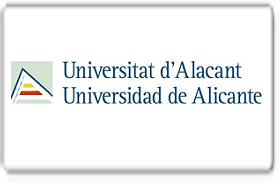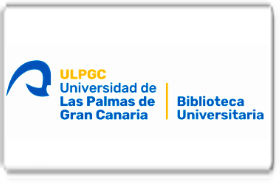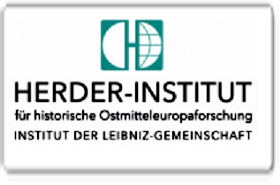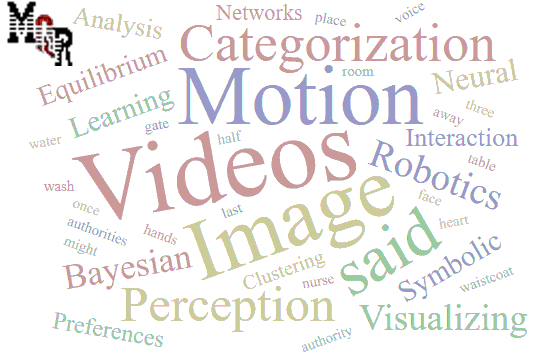Sistemas de Monitoreo de Salud Estructural de Estructuras Civiles: una revisión bibliográfica.
DOI:
https://doi.org/10.56048/MQR20225.6.3.2022.1641-1667Palabras clave:
SHM, monitoreo, salud estructural, puente, edificio, túnel.Resumen
En la actualidad el monitoreo de salud estructural (SHM) es considerado como un campo de investigación emergente, este permite identificar el estado de salud de una estructura a través del monitoreo del comportamiento estructural, el sistema identifica defectos y daños de una estructura de manera temprana, sin importar que la estructura se encuentre en etapa de construcción o funcionamiento. SHM ha sido aplicado en múltiples estructuras a nivel mundial, desde hace muchas décadas, lo que ha permitido la investigación y el desarrollo de tecnologías eficientes y accesibles. Los resultados obtenidos con la aplicación de SHM han demostrado que es una herramienta que permite una operación segura y una administración eficiente de la estructura, ya que al tener un diagnóstico temprano del estado de salud es posible enfocar los esfuerzos de mantenimiento en los defectos y daños identificados antes de que estos sean visibles a los métodos convencionales, optimizando de esta manera el uso de recursos utilizados en el mantenimiento y potenciación de la infraestructura. Las principales aplicaciones se las ha realizado en estructuras importantes donde no es económicamente viable su reemplazo, sin embargo, su aplicación también es posible en estructuras pequeñas.
Descargas
Métricas
Cited
DOI: 10.56048![]()
Citas
AlHamaydeh, M., & Aswad, N. G. (2022). Structural Health Monitoring Techniques and Technologies for Large-Scale Structures: Challenges, Limitations, and Recommendations. Practice Periodical on Structural Design and Construction, 27(3), 03122004. https://doi.org/10.1061/(ASCE)SC.1943-5576.0000703
Brownjohn, J. M. W. (2007). Structural health monitoring of civil infrastructure. Philosophical Transactions of the Royal Society A: Mathematical, Physical and Engineering Sciences, 365(1851), 589–622. https://doi.org/10.1098/rsta.2006.1925
Caicedo, J. M. (2011). Practical guidelines for the natural excitation technique (NExT) and the eigensystem realization algorithm (ERA) for modal identification using ambient vibration. Experimental Techniques, 35(4), 52–58. https://doi.org/10.1111/J.1747-1567.2010.00643.X
Cárdenas, E. M., & Medina, L. U. (2021). Non-Parametric Operational Modal Analysis Methods in Frequency Domain: A Systematic Review. International Journal of Engineering and Technology Innovation, 11(1), 34–44. https://doi.org/10.46604/IJETI.2021.6126
Carder, D. S., Carder, & S., D. (1937). Observed vibrations of bridges*. BuSSA, 27(4), 267–303. https://doi.org/10.1785/BSSA0270040267
Conservation, D. (2022). California Strong Motion Instrumentation Program. https://www.conservation.ca.gov/cgs/smip
Coppolino, R. N., & Rubin, S. (1980). Detectability Of Structural Failures In Offshore Platforms By Ambient Vibration Monitoring. Proceedings of the Annual Offshore Technology Conference, 1980-May, 101–110. https://doi.org/10.4043/3865-MS
Costa, B. J. A., Magalhães, F., Cunha, Á., & Figueiras, J. (2013). Rehabilitation assessment of a centenary steel bridge based on modal analysis. Engineering Structures, 56, 260–272. https://doi.org/10.1016/j.engstruct.2013.05.010
Das, S., & Saha, P. (2018). A review of some advanced sensors used for health diagnosis of civil engineering structures. Measurement, 129, 68–90. https://doi.org/10.1016/j.measurement.2018.07.008
Farrar, C. R., & Worden, K. (2006). An introduction to structural health monitoring. Philosophical Transactions of the Royal Society A: Mathematical, Physical and Engineering Sciences, 365(1851), 303–315. https://doi.org/10.1098/RSTA.2006.1928
Farrar, C. R., & Worden, K. (2012). Structural Health Monitoring. In Structural Health Monitoring: A Machine Learning Perspective. Wiley. https://doi.org/10.1002/9781118443118
Felipe, A., & Mejía, R. V. (2010). Estado del arte en monitorización de salud estructural: Un enfoque basado en agentes inteligentes. In Ciencia e Ingeniería Neogranadina (Vol. 20, Issue 1). Universidad Militar Nueva Granada. http://www.scielo.org.co/pdf/cein/v20n1/v20n1a08.pdf
Gómez, J., Casas, J. R., & Villalba, S. (2021). Strain-monitoring of a concrete tunnel lining with distributed optical fiber sensors. International Conference on Structural Health Monitoring of Intelligent Infrastructure: Transferring Research into Practice, SHMII, 2021-June, 879–886.
Han, H., Wang, J., Meng, X., & Liu, H. (2016). Analysis of the dynamic response of a long span bridge using GPS/accelerometer/anemometer under typhoon loading. Engineering Structures, 122, 238–250. https://doi.org/10.1016/J.ENGSTRUCT.2016.04.041
He, Y., Li, Q., Zhu, H., Han, X., He, Y., & Li, X. (2018). Monitoring of structural modal parameters and dynamic responses of a 600m-high skyscraper during a typhoon. The Structural Design of Tall and Special Buildings, 27(6), e1456. https://doi.org/10.1002/TAL.1456
Herrasti, Z., Val, I., Gabilondo, I., Berganzo, J., Arriola, A., & Martínez, F. (2016). Wireless sensor nodes for generic signal conditioning: Application to Structural Health Monitoring of wind turbines. Sensors and Actuators A: Physical, 247, 604–613. https://doi.org/10.1016/J.SNA.2016.06.027
Hou, S., Zeng, C., Zhang, H., & Ou, J. (2018). Monitoring interstory drift in buildings under seismic loading using MEMS inclinometers. Construction and Building Materials, 185, 453–467. https://doi.org/10.1016/J.CONBUILDMAT.2018.07.087
Hudson, D. E. (1977). Dynamic Tests of Full-Scale Structures. Journal of the Engineering Mechanics Division, 103(6), 1141–1157. https://doi.org/10.1061/JMCEA3.0002302
Ibrahim, S. R. (1999). Fundamentals of Time Domain Modal Identification. Modal Analysis and Testing, 241–250. https://doi.org/10.1007/978-94-011-4503-9_11
ICOLD. (1994). Ageing of dams and appurtenant works: review and recommendations. CIGB.
Ikuma, M. (2005). Maintenance of the undersea section of the Seikan Tunnel. Tunnelling and Underground Space Technology, 20(2), 143–149. https://doi.org/10.1016/J.TUST.2003.10.001
Im, S. B., Hurlebaus, S., & Kang, Y. J. (2013). Summary Review of GPS Technology for Structural Health Monitoring. Journal of Structural Engineering, 139(10), 1653–1664. https://doi.org/10.1061/(ASCE)ST.1943-541X.0000475
Kenley, R. M., & Dodds, C. J. (1980). West Sole WE Platform: Detection Of Damage By Structural Response Measurements. Proceedings of the Annual Offshore Technology Conference, 1980-May, 111–118. https://doi.org/10.4043/3866-MS
Klun, M., & Kryžanowski, A. (2022). Dynamic monitoring as a part of structural health monitoring of dams. Archives of Civil Engineering, 68(No 1), 569–578. https://doi.org/10.24425/ace.2022.140186
Ko, J. M., & Ni, Y. Q. (2005). Technology developments in structural health monitoring of large-scale bridges. Engineering Structures, 27(12), 1715–1725. https://doi.org/10.1016/J.ENGSTRUCT.2005.02.021
Kourehli, S. S. (2017). Plate-like structures damage detection based on static response and static strain energy using gaussian process regression (GPR). Https://Doi.Org/10.1080/17415977.2017.1386188, 26(8), 1198–1213. https://doi.org/10.1080/17415977.2017.1386188
Lammering, R. (2013). Special issue ‘“SHM—structural health monitoring.”’ CEAS Aeronautical Journal, 4(1), 1–1. https://doi.org/10.1007/s13272-013-0067-y
Li, Q., He, Y., Wang, H., Zhou, K., & Yan, B. (2017). Monitoring and time-dependent analysis of vertical deformations of the tallest building in China. Structural Control and Health Monitoring, 24(7), e1936. https://doi.org/10.1002/STC.1936
Li, Q., He, Y., Zhou, K., Han, X., He, Y., & Shu, Z. (2018). Structural health monitoring for a 600 m high skyscraper. Structural Design of Tall and Special Buildings, 27(12). https://doi.org/10.1002/TAL.1490
Liu, D., Tang, Z., Bao, Y., & Li, H. (2021). Machine-learning-based methods for output-only structural modal identification. Structural Control and Health Monitoring, 28(12). https://doi.org/10.1002/STC.2843
Liu, F., Li, H., Li, W., & Wang, B. (2014). Experimental study of improved modal strain energy method for damage localisation in jacket-type offshore wind turbines. Renewable Energy, 72, 174–181. https://doi.org/10.1016/J.RENENE.2014.07.007
Liu, F., Wu, J., Gu, F., & Ball, A. D. (2019). An Introduction of a Robust OMA Method: CoS-SSI and Its Performance Evaluation through the Simulation and a Case Study. Shock and Vibration, 2019. https://doi.org/10.1155/2019/6581516
Naeim, F. (2013). Real-Time Damage Detection and Performance Evaluation for Buildings. In Earthquakes and Health Monitoring of Civil Structures (pp. 167–196). Springer, Dordrecht. https://doi.org/10.1007/978-94-007-5182-8_7
Narayanan, A., & Subramaniam, K. V. L. (2017). Damage assessment in concrete structures using piezoelectric based sensors. Revista ALCONPAT, 7(1), 25–35. https://doi.org/10.21041/RA.V7I1.173
Pallot, J., Ekanayake, C., Ma, H., & Naranpanawe, L. (2022). Application of operational modal analysis to investigate transformer vibration patterns. IET Generation, Transmission & Distribution, 16(10), 1964–1973. https://doi.org/10.1049/GTD2.12406
Peeters, B., & Roeck, G. de. (2001). Stochastic system identification for operational modal analysis: A Review. Journal of Dynamic Systems, Measurement and Control, Transactions of the ASME, 123(4), 659–667. https://doi.org/10.1115/1.1410370
Qian, F., Yuan, T., Zhi-Wei, B., -, A., Li, P., Qu, D., Zhang, L., Xiao-Hua, M., Hai-Xia, G., Yan-Rong, C., Tong, J., Chen, X., & Yu, H. (2022). Research on structural health monitoring method based on the inertial inclination sensor array. Journal of Physics: Conference Series, 2264(1), 012003. https://doi.org/10.1088/1742-6596/2264/1/012003
Ran, L., Ye, X. W., & Zhu, H. H. (2011). Long-Term Monitoring and Safety Evaluation of A Metro Station During Deep Excavation. Procedia Engineering, 14, 785–792. https://doi.org/10.1016/J.PROENG.2011.07.099
Ribeiro, R. R., & Lameiras, R. de M. (2019). Evaluation of low-cost MEMS accelerometers for SHM: frequency and damping identification of civil structures. Latin American Journal of Solids and Structures, 16(7 CILAMCE 2018), 203. https://doi.org/10.1590/1679-78255308
Salvaneschi, P., Cadei, M., & Lazzari, M. (1996). Applying AI to Structural Safety Monitoring and Evaluation. IEEE Intelligent Systems, 11(04), 24–34. https://doi.org/10.1109/64.511774
Shokravi, H., Shokravi, H., Bakhary, N., Rahimian Koloor, S. S., & Petrů, M. (2020). Health monitoring of civil infrastructures by subspace system identification method: An overview. Applied Sciences (Switzerland), 10(8). https://doi.org/10.3390/APP10082786
Svendsen, B. T., Petersen, Ø. W., Frøseth, G. T., & Rønnquist, A. (2021). Improved finite element model updating of a full-scale steel bridge using sensitivity analysis. Structure and Infrastructure Engineering. https://doi.org/10.1080/15732479.2021.1944227
Ubertini, F., Gentile, C., & Materazzi, A. L. (2013). Automated modal identification in operational conditions and its application to bridges. Engineering Structures, 46, 264–278. https://doi.org/10.1016/j.engstruct.2012.07.031
University of Washington Structural Research Laboratory. (1949). Aerodynamic stability of suspension bridges with special reference to the Tacoma Narrows Bridge : a report of an investigation conducted by the Structural Research Laboratory, University of Washington, under the direction of the Washington Toll Bridge Aut (1949-54. Seattle : University of Washington Press, Ed.). University of Washington Press,.
Warsi, Z. H., Irshad, S. M., Khan, F., Shahbaz, M. A., Junaid, M., & Amin, S. U. (2019). Sensors for structural health monitoring: A review. 2019 2nd International Conference on Latest Trends in Electrical Engineering and Computing Technologies, INTELLECT 2019. https://doi.org/10.1109/INTELLECT47034.2019.8955453
Xu, N., Tang, C., Li, H., & Liang, Z. (2012). Application of Microseismic Monitoring Technique in Hydroelectric Projects. Hydropower - Practice and Application. https://doi.org/10.5772/31625
Yang, Y., & Nagarajaiah, S. (2013). Blind modal identification of output-only structures in time-domain based on complexity pursuit. Earthquake Engineering & Structural Dynamics, 42(13), 1885–1905. https://doi.org/10.1002/EQE.2302
Ye, X., Huang, P., Pan, C., & Mei, L. (2021). Innovative stabilization diagram for automated structural modal identification based on ERA and hierarchical cluster analysis. Journal of Civil Structural Health Monitoring 2021 11:5, 11(5), 1355–1373. https://doi.org/10.1007/S13349-021-00514-8
Zhang, G., Moutinho, C., & Magalhães, F. (2022). Continuous dynamic monitoring of a large-span arch bridge with wireless nodes based on MEMS accelerometers. Structural Control and Health Monitoring, 29(7), e2963. https://doi.org/10.1002/STC.2963
Zhuo, Y., Han, Z., Duan, J., Jin, H., & Fu, H. (2021). Estimation of vibration stability in milling of thin-walled parts using operational modal analysis. International Journal of Advanced Manufacturing Technology, 115(4), 1259–1275. https://doi.org/10.1007/S00170-021-07051-
Publicado
Cómo citar
Número
Sección
Licencia
Derechos de autor 2022 MQRInvestigar

Esta obra está bajo una licencia internacional Creative Commons Atribución 4.0.
Los autores se comprometen a respetar la información académica de otros autores, y a ceder los derechos de autor a la Revista MQRInvestigar, para que el artículo pueda ser editado, publicado y distribuido. El contenido de los artículos científicos y de las publicaciones que aparecen en la revista es responsabilidad exclusiva de sus autores. La distribución de los artículos publicados se realiza bajo una licencia 
































































































